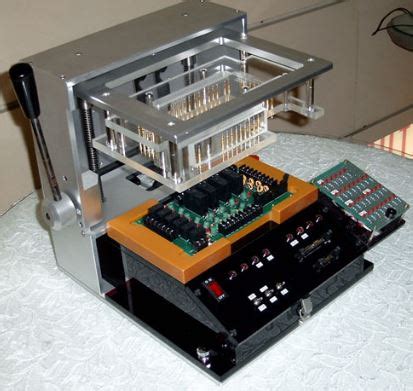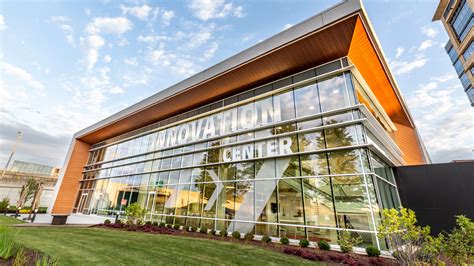
Blog
-
What is Carbon Ink PCB – A Complete Introduction
Posted by
–
 Read more: What is Carbon Ink PCB – A Complete Introduction
Read more: What is Carbon Ink PCB – A Complete IntroductionWhat is a Carbon Ink PCB? A carbon ink PCB is a printed circuit board where the conductive traces are made from carbon-based inks rather than the traditional copper. The carbon ink is printed onto the substrate material (usually a flexible plastic film) using methods like screen printing or inkjet […]
-
Copper PCB Manufacturers & Fabricators
Posted by
–
 Read more: Copper PCB Manufacturers & Fabricators
Read more: Copper PCB Manufacturers & FabricatorsIntroduction to Copper PCBs Printed Circuit Boards (PCBs) are the backbone of modern electronics. They provide the electrical connectivity and mechanical support for electronic components in devices ranging from smartphones and laptops to industrial control systems and medical equipment. Among the various types of PCBs, copper PCBs stand out for […]
-
 Read more: How Much Do You Know about Drilling in PCB Design?
Read more: How Much Do You Know about Drilling in PCB Design?Introduction to PCB Drilling PCB (Printed Circuit Board) drilling is a crucial step in the PCB manufacturing process. It involves creating holes in the PCB to allow for the insertion of electronic components and the creation of vias for electrical connections between layers. Drilling is typically done using specialized machines […]
-
 Read more: Basics To Drilling And How Precise Drilling Can Reduce The Cost Of PCB Fabrication?
Read more: Basics To Drilling And How Precise Drilling Can Reduce The Cost Of PCB Fabrication?Introduction to PCB Drilling Printed Circuit Board (PCB) drilling is a crucial step in the PCB fabrication process. It involves creating holes in the PCB substrate to allow for the connection of electronic components and the routing of electrical signals. Precise drilling is essential for ensuring the reliability and functionality […]
-
 Read more: How does PCB laser drilling work & what are the advantages of using it?
Read more: How does PCB laser drilling work & what are the advantages of using it?Introduction to PCB laser drilling PCB laser drilling is an advanced technology used in the manufacturing of printed circuit boards (PCBs). It involves using high-powered lasers to create precise micro-vias and holes in PCBs. Laser drilling enables the creation of much smaller, more accurate holes compared to traditional mechanical drilling […]
-
Complete Electrical Testing in PCB Manufacturing
Posted by
–
 Read more: Complete Electrical Testing in PCB Manufacturing
Read more: Complete Electrical Testing in PCB ManufacturingThe Importance of Electrical Testing in PCB Manufacturing Electrical testing is vital in PCB manufacturing for several reasons: Ensuring the functionality of the PCB Identifying and rectifying defects early in the manufacturing process Verifying the compliance with design specifications and industry standards Improving the overall quality and reliability of the […]
-
 Read more: What is a Printed Circuit Board (PCB) 2024 Comprehensive Guide
Read more: What is a Printed Circuit Board (PCB) 2024 Comprehensive GuideIntroduction to Printed Circuit Boards (PCBs) A Printed Circuit Board (PCB) is a fundamental component in modern electronic devices. It is a flat board made of insulating materials, such as fiberglass or composite epoxy, with conductive pathways etched or printed onto its surface. These pathways, also known as traces, connect […]
-
Tech Etch Innovation Center Offers One Stop Destination for Design and Manufacturing of PCB Products & Parts
Posted by
–
 Read more: Tech Etch Innovation Center Offers One Stop Destination for Design and Manufacturing of PCB Products & Parts
Read more: Tech Etch Innovation Center Offers One Stop Destination for Design and Manufacturing of PCB Products & PartsIntroduction to Tech Etch Innovation Center The Tech Etch Innovation Center is a state-of-the-art facility that provides a comprehensive range of services for the design and manufacturing of printed circuit board (PCB) products and parts. As a one-stop destination, the center offers a streamlined process for clients to bring their […]
-
Rigid PCB Manufacturers & Fabricators
Posted by
–
 Read more: Rigid PCB Manufacturers & Fabricators
Read more: Rigid PCB Manufacturers & FabricatorsIntroduction to Rigid PCBs Rigid PCBs (Printed Circuit Boards) are the backbone of modern electronics. These boards provide a stable and reliable platform for mounting and interconnecting electronic components. Rigid PCBs are made from a solid substrate material, typically fiberglass or epoxy resin, which gives them their rigid structure. This […]
-
Neltec PCB Manufacturers and Fabricators
Posted by
–
 Read more: Neltec PCB Manufacturers and Fabricators
Read more: Neltec PCB Manufacturers and FabricatorsIntroduction to PCB Manufacturing Printed Circuit Boards (PCBs) are the backbone of modern electronics, found in everything from smartphones and computers to medical devices and aerospace equipment. PCB Manufacturers play a crucial role in bringing these designs to life, transforming electronic schematics into functional, reliable circuit boards. In this comprehensive […]




